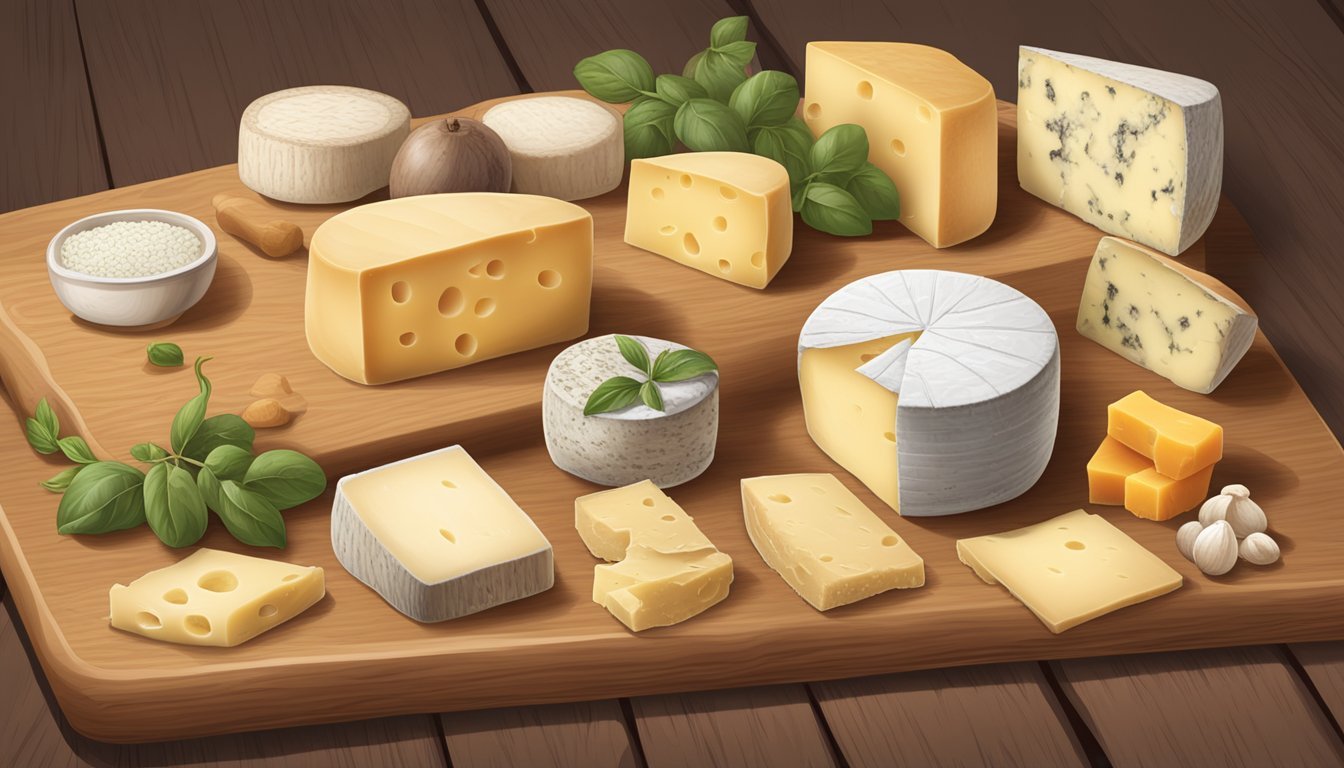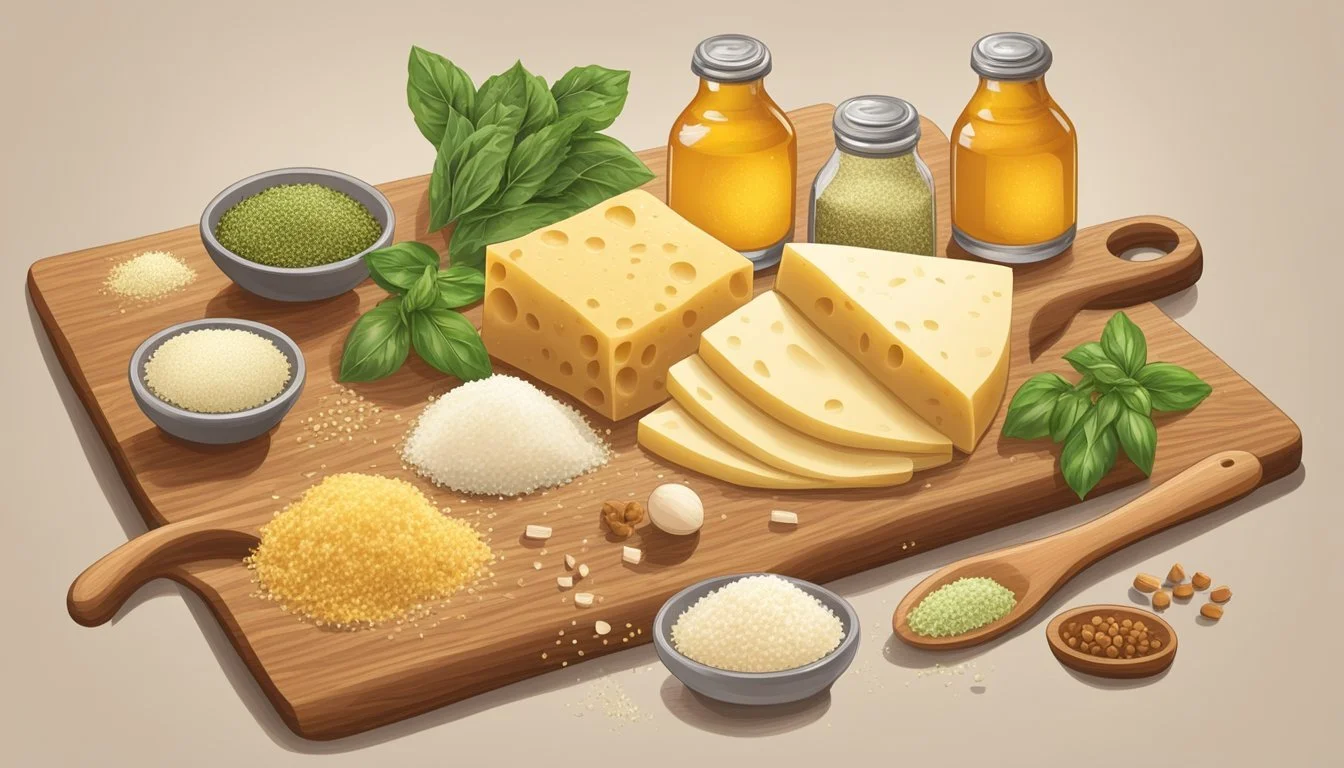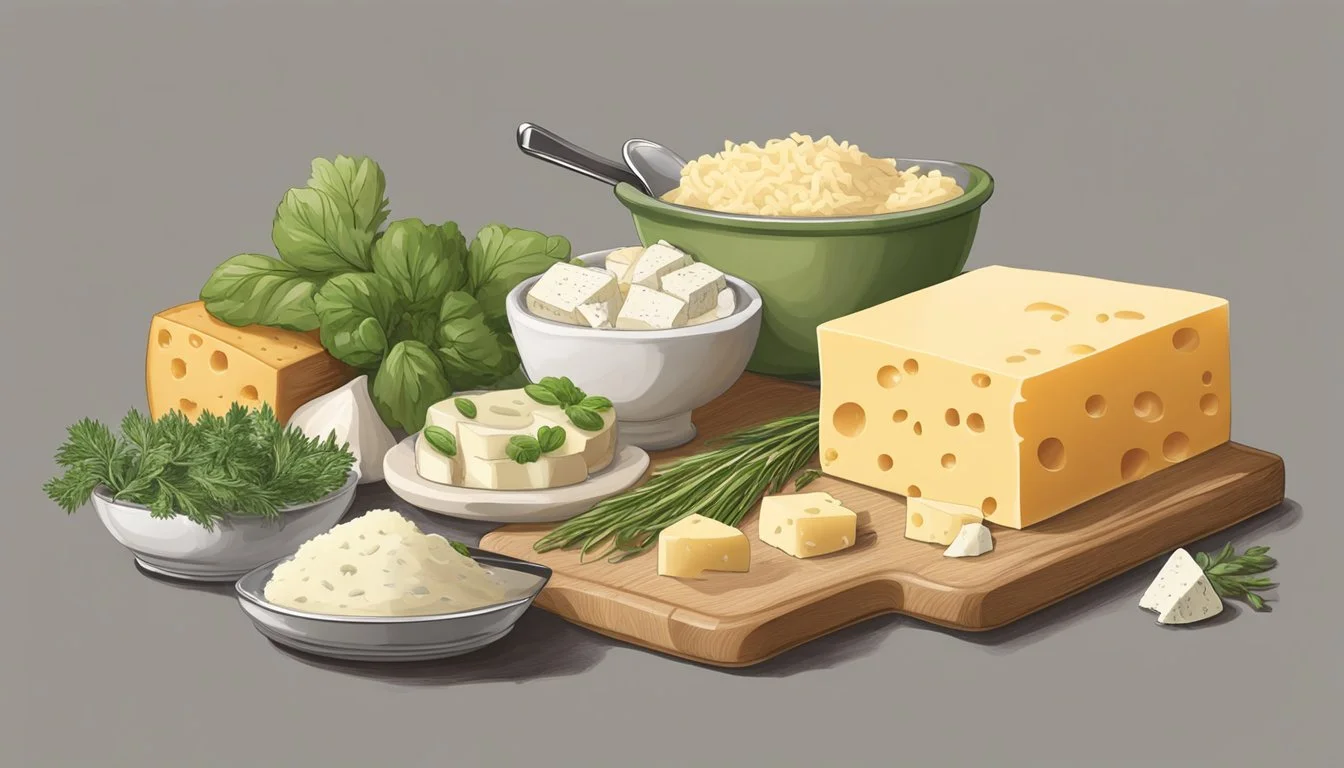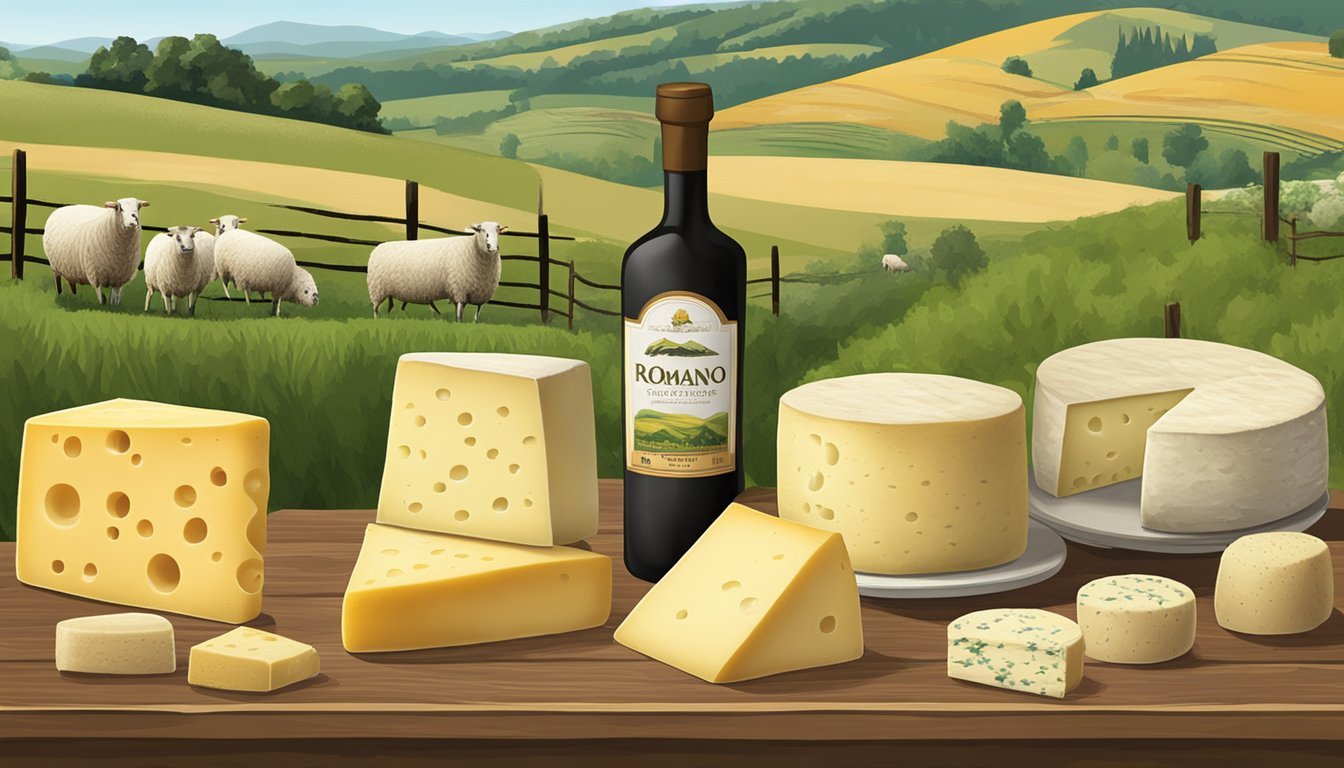Pecorino Romano Substitutes
Top Alternatives for Every Recipe
For those who love Italian cuisine, Pecorino Romano is a staple cheese, bringing a sharp and salty flavor to many dishes. Yet, there are times when finding this Italian cheese might be difficult, and knowing the best substitutes can save your recipe. Parmesan is an excellent alternative to Pecorino Romano, offering a similar salty flavor and granular texture.
Another great substitute is Kefalotyri, a hard Greek cheese made from sheep or goat milk, known for its crumbly texture and rich, tangy flavor. This cheese melts well, making it a versatile choice for various dishes, from spanakopita to baked casseroles. Behind these, Parmigiano-Reggiano, often called the king of Italian cheeses, also stands out, providing a nuttier and less salty taste compared to Pecorino Romano, yet still enhancing your favorite recipes beautifully.
Understanding Pecorino Romano
Pecorino Romano, a traditional Italian cheese, is known for its distinct flavor and various culinary applications. It has a rich history, unique production process, and specific characteristics that set it apart from other cheeses.
Origins and Production
Pecorino Romano is one of Italy's oldest cheeses, with roots tracing back to ancient Roman times. This cheese hails primarily from the island of Sardinia, though it's also produced in certain regions of Lazio and Tuscany. The cheese carries a DOP (Denominazione di Origine Protetta) designation, ensuring its production adheres to strict regulations.
The main ingredient is sheep's milk, which imparts a unique richness. The cheese-making process involves curdling the milk, draining the whey, compacting the curds, and finally aging the cheese. Typical aging periods range from five to eight months, during which the cheese develops its robust flavor and firm texture.
Characteristics and Uses
Pecorino Romano is recognized for its hard, granular texture and white to pale yellow color. The aging process contributes to its strong, salty taste, making it a favorite for grating. It has a crumbly texture that becomes more pronounced with age.
This cheese is commonly used in Italian cuisine. It's a key ingredient in dishes like pasta and carbonara, where it's often grated to enhance the dish's flavor. Pecorino Romano also pairs well with salads, soups, and even certain meat dishes, adding a sharp, tangy note that elevates the overall taste experience.
Pecorino Romano's versatility and distinctive profile make it an essential component in various culinary traditions, both within and beyond Italy.
Criteria for Choosing a Substitute
When selecting a substitute for Pecorino Romano, key factors such as flavor compatibility, texture, and availability will guide the best choice. These elements ensure the replacement maintains the dish's integrity without compromising taste and culinary outcome.
Flavor Profile Compatibility
The key to finding a suitable substitute lies in matching Pecorino Romano's distinctive sharp, salty flavor. Parmigiano-Reggiano, known for its nuttier and less salty taste due to longer aging, often serves as a popular alternative.
Piave, a cow's milk cheese, also offers a comparable intense and slightly sweet flavor, making it another viable option. Halloumi, though milder, provides a unique taste, ideal for recipes where intense flavor isn't paramount. Selecting a cheese that closely mirrors Pecorino Romano’s sharp profile is crucial for achieving desired results.
Texture Consideration
Another important factor is the texture. Pecorino Romano has a hard, crumbly texture that impacts both the dish's mouthfeel and preparation.
Parmigiano-Reggiano again aligns well, given its similarly hard texture that grates easily. Piave, especially in its older stages, also attains a hard consistency, making it suitable as a substitute.
For applications like grilling or frying, Halloumi stands out due to its semi-hard, rubbery texture that holds its shape under heat, adding a different but complementary texture to dishes.
Availability and Accessibility
Finally, the practicality of sourcing substitutes impacts the ease of replacement. Parmigiano-Reggiano and Piave are commonly available in many supermarkets and specialty stores, making them accessible options.
Halloumi, though slightly less common, is increasingly found in various grocery stores with expanding international cheese selections. When choosing a substitute, considering locally available options ensures seamless culinary experiments without unnecessary delays.
Cheese Substitutes for Pecorino Romano
For those seeking alternatives to Pecorino Romano, several cheeses can replicate its salty, tangy flavor in various dishes. These substitutes range from Italian staples like Parmigiano-Reggiano and Grana Padano to Spanish Manchego and other versatile options.
Parmigiano-Reggiano
Parmigiano-Reggiano, often called the "king of Italian cheeses," makes an excellent substitute for Pecorino Romano. Originating from the regions of Parma, Reggio Emilia, Modena, and parts of Mantua and Bologna, this cheese is aged longer, resulting in a nuttier and less salty taste.
For those who enjoy a finely grated cheese, Parmigiano-Reggiano's granular texture is ideal. It pairs well with pasta, soups, and salads. Use it in a 1:1 ratio to Pecorino Romano. Its robust flavor profile can enhance a wide range of dishes.
Grana Padano
Grana Padano is another Italian cheese that can step in for Pecorino Romano. Though it is less expensive, it provides a comparable hard texture and a slightly milder flavor. Made in the Po River Valley, Grana Padano is aged from 9 to 24 months, which affects its sharpness and aroma.
Cooks can use this cheese in various Mediterranean recipes. Its affordability and texture make it a favorable option. Grana Padano can be grated over pasta, incorporated into sauces, or used as a table cheese.
Asiago
Asiago cheese offers a unique taste that varies with aging. Fresh Asiago has a milder flavor, while aged Asiago, known as Asiago d'Allevo, delivers a firmer texture and more intense taste, similar to Pecorino Romano. Originating from the Veneto and Trentino regions of Italy, Asiago can fit well into many recipes.
It’s often used for grating over dishes or melting into soups and sauces. Asiago provides flexibility and can be substituted at a 1:1 ratio. Its richness can elevate the flavor of numerous culinary creations.
Manchego
Manchego cheese from Spain is another substitute worth considering. Particularly the aged Manchego Viejo, it features a firm, slightly crumbly texture and an intense, zesty flavor. This cheese is made from sheep's milk, similar to Pecorino Romano, which allows it to fit seamlessly into many recipes.
Used in various Spanish dishes, it also works well in Italian cuisine. Manchego can be grated or sliced, providing a unique twist. Its rich, tangy flavor can add depth and distinction to your meal.
Other Cheese Varieties
There are several other cheeses that can replace Pecorino Romano effectively:
Piave cheese: Similar to Parmesan, it comes in different aging stages. The older forms are harder and more suitable for grating.
Ricotta Salata: This cheese is firm and salty, making it a good choice for adding a crumbly texture and salty taste.
Feta: Though softer and brinier, it can be used in specific Mediterranean dishes needing a tangy flavor.
Cotija cheese: A crumbly Mexican cheese that can mimic Pecorino Romano's texture and saltiness in certain recipes.
These cheeses offer various textures and flavors, making them versatile options. While some may not perfectly mimic Pecorino Romano, they can still enhance your dishes in unique ways.
Non-Dairy and Vegan Substitutes
For those seeking non-dairy and vegan alternatives to Pecorino Romano, key options include nutritional yeast combined with nuts, as well as various dairy-free cheese alternatives.
Nutritional Yeast and Nuts
Nutritional yeast offers a savory, cheesy flavor that can effectively mimic the taste of Pecorino Romano. When combined with nuts like cashews, it creates a textured and flavorful substitute. Recipe: Blend 3/4 cup of raw cashews with 4 tablespoons of nutritional yeast, 3/4 teaspoon of sea salt, 1/2 teaspoon of garlic powder, and 1/4 teaspoon of onion powder. This blend can be sprinkled over pasta, salads, or used in sauces. The mixture does not melt like traditional cheese but provides a rich, satisfying taste.
Dairy-Free Cheese Alternatives
Dairy-free cheese alternatives have become increasingly popular and accessible. Vegan parmesan-style cheeses are often made from a base like almonds or cashews, combined with seasonings to replicate the flavor of Pecorino Romano. These products are available in most grocery stores and offer a similar texture and grating capability. They can be used as a topping for a range of dishes, providing both flavor and a textural element that closely matches traditional cheese.
Seasonings and Condiments
Incorporating various seasonings and condiments can enhance the flavor profile of dishes prepared with substitutes for Pecorino Romano. Utilizing certain ingredients can help achieve the desired saltiness and texture common in Mediterranean cuisine.
Creating a Flavorful Blend
Seasonings play a critical role in mimicking the distinct taste of Pecorino Romano. Garlic powder and onion powder contribute to a rich and savory base.
Sea salt can provide the necessary saltiness. These ingredients combined create a balanced blend that can elevate the flavor of any dish. Experiment by mixing them in different ratios to find the combination that best suits the substitute cheese being used.
Enhancers for Saltiness and Texture
To replicate the saltiness and crumbly texture of Pecorino Romano, consider sea salt flakes and toasted breadcrumbs.
Sea salt flakes dissolve quickly, delivering an immediate salty kick. Toasting breadcrumbs introduces a crunchy texture that can mimic the mouthfeel of aged cheeses. Using capers can add a briny note, enhancing the flavor complexity and providing a satisfying bite.
Combining with Mediterranean Ingredients
Mediterranean ingredients like olives, sun-dried tomatoes, and capers can harmonize well with substitutes for Pecorino Romano.
Slices of sun-dried tomatoes contribute a concentrated burst of flavor, while olives offer a robust and slightly tangy taste. Capers, with their briny aroma, can accentuate the saltiness. These ingredients not only add depth but also align with the culinary traditions of Mediterranean cuisine.
Nutritional Considerations
When considering substitutes for Pecorino Romano, it's important to evaluate their nutritional impact. Various substitutes offer unique health benefits, especially for those following vegan and vegetarian diets.
Health Benefits of Cheese Substitutes
Cheese substitutes like Parmesan, Manchego, and Kefalotyri provide an array of health benefits. Parmesan, for example, is rich in protein, which is essential for muscle repair and growth.
Manchego offers a good source of calcium and phosphorus, which are crucial for bone health. Kefalotyri is known for its high content of B-vitamins, aiding in energy production and brain function.
These substitutes also bring in zinc, crucial for immune function. Most of these cheese alternatives are also lower in saturated fats compared to some other cheeses, which can benefit cardiovascular health.
Vegan and Vegetarian Benefits
For those following vegan or vegetarian diets, choosing the right dairy-free alternatives is key. Nutritional yeast is a popular vegan substitute that not only mimics the umami flavor of cheese but is also high in B-vitamins and protein. It is often fortified with vitamin B12, an essential nutrient that can be lacking in vegan diets.
Other options include vegan cheeses made from nuts like cashews, which offer healthy fats and protein. These alternatives are excellent for maintaining a balanced diet while avoiding animal products. Additionally, many vegetarian-friendly substitutes, like Halloumi and Manchego, cater to those who consume dairy but seek more sustainable or varied options.
Properly selecting a substitute ensures you meet your dietary and nutritional needs while enjoying the flavors you love.
Pairing with Foods and Wines
Pecorino Romano cheese and its substitutes offer a range of flavors and textures suitable for enhancing various dishes and wine experiences. Specific pairings can elevate the flavor profiles and ensure a well-rounded culinary experience.
Complementary Food Pairings
Pasta: Pecorino Romano and its substitutes like Parmigiano-Reggiano or Kefalotyri can enhance classic pasta dishes. Carbonara, in particular, benefits from the cheese’s salty and tangy notes.
Salads: For salads, aged Pecorino Toscano provides a zesty kick, while Pecorino Siciliano introduces a subtle herbaceous flavor.
Roasted Vegetables: Grated Pecorino Sardo on roasted vegetables, especially root vegetables and squash, adds a savory depth.
Cheese Platters: Substitutes like Manchego and Halloumi diversify cheese platters. Manchego offers an intense, zesty flavor, while Halloumi’s firm structure is perfect for grilling.
Bread and Crackers: Pairing Kefalotyri with artisanal bread or crackers enhances its rich, tangy flavor.
Wine Pairings for Substitutes
Pecorino Romano: This cheese pairs wonderfully with a robust Chianti, where the tannins and acidity of the wine balance the cheese’s saltiness.
Parmigiano-Reggiano: Aged whites like Verdicchio or light reds such as Barbera work well, complementing its nutty flavor.
Manchego: A Spanish red wine like Tempranillo is an excellent match, accentuating Manchego’s zesty notes.
Kefalotyri: Greek wines like Assyrtiko or Xinomavro bring out the tanginess and crumbly texture of Kefalotyri.
Halloumi: Pair with something light and crisp, such as a Sauvignon Blanc, which aligns with Halloumi’s firm texture and mild flavor.
Regional Varieties of Pecorino
Pecorino cheese comes in several varieties, each hailing from different regions of Italy. These varieties include Pecorino Romano, Pecorino Sardo, Pecorino Toscano, and Pecorino Siciliano. Each variety has unique characteristics shaped by regional traditions and local ingredients.
Pecorino Romano and Its Cousins
Pecorino Romano is perhaps the most well-known variety, originating from the Lazio region. It is made from sheep's milk and is known for its salty, tangy flavor. Aged for at least eight months, it is a staple in many Italian dishes.
Pecorino Sardo comes from Sardinia and features a more subtle flavor compared to Pecorino Romano. It can be found in both fresh and aged forms, with the aged version having a richer, more pronounced taste.
Pecorino Toscano, from Tuscany, tends to be milder and can be enjoyed both fresh and aged. Its texture is softer, making it suitable for a variety of culinary applications, from cheeses to salads.
Pecorino Siciliano hails from Sicily and is typically aged for a longer period. This aging process gives it a robust, intense flavor, making it a favorite for grating over pasta dishes or enjoyed on its own.
In summary, each regional variety of Pecorino cheese offers distinct flavors and textures that cater to different culinary needs, from grating over pasta to enjoying with bread and wine.








